Effect of Tensile Deformation on Residual Stress of GH4169 Alloy
Abstract
1. Introduction
2. Materials and Methods
3. Results
3.1. Residual Stress
3.2. Statistics of Dislocation Density of GH4169 Alloy before and after Tensile Treatment Based on XRD
3.3. Dislocation Distribution and Grain Boundary Angle Results of GH4169 Alloy before and after Tensile Treatment Based on EBSD
3.3.1. Dislocation Distribution Based on KAM
3.3.2. Small-Angle Grain Boundaries Change
4. Discussion
5. Conclusions
- Tensile treatment can effectively reduce the residual stress in GH4169 alloy. When the tensile deformation is 3%, the residual stress reduction effect is the best. Under this tensile deformation, the residual stress reduction rates along the tensile direction and perpendicular to the tensile direction reached 87% and 91%, respectively;
- Using XRD and EBSD methods, it was observed that the dislocations in the GH4169 alloy changed significantly after tensile treatment. The dislocation density increases by approximately 5.1% after tensile treatment. The 3% tensile deformation provides a suitable driving force and activation energy for the movement of dislocations so that the dislocations packed at the grain boundaries move and annihilate, and the dislocations within the grains proliferate. The distribution of dislocations in the GH4169 alloy is more uniform, which relaxes the residual stress in the alloy.
Author Contributions
Funding
Institutional Review Board Statement
Informed Consent Statement
Data Availability Statement
Conflicts of Interest
References
- Wang, Y.C.; Lei, L.M.; Shi, L.; Wan, H.Y.; Liang, F.; Zhang, G.P. Scanning strategy dependent tensile properties of selective laser melted GH4169. Mater. Sci. Eng. A 2020, 788, 139616. [Google Scholar] [CrossRef]
- Yu, Z.F.; Liu, L.; Liu, R.; Cao, M.; Fan, L.; Li, Y.; Geng, S.J.; Wang, F.H. Corrosion Behavior of GH4169 Alloy under Alternating Oxidation at 900 °C and Solution Immersion. Materials 2019, 12, 1503. [Google Scholar] [CrossRef]
- Qu, J.L.; Yang, S.F.; Chen, Z.Y.; Du, J.H.; Li, J.S.; Wang, D. Effect of Turning Amount on Metallurgical Qualities and Mechanical Properties of GH4169 Superalloy. Materials 2019, 12, 1852. [Google Scholar] [CrossRef]
- Aba-Perea, P.E.; Pirling, T.; Preuss, M. In-Situ Residual Stress Analysis During Annealing Treatments Using Neutron Diffraction in Combination with a Novel Furnace Design. Mater. Des. 2016, 110, 925–931. [Google Scholar] [CrossRef]
- Rolph, J.; Evans, A.; Paradowska, A.; Hofmann, M.; Hardy, M.; Preuss, M. Stress Relaxation through Ageing Heat Treatment—A Comparison Between in Situ and Ex Situ Neutron Diffraction Techniques. Cr. Phys. 2012, 13, 307–315. [Google Scholar] [CrossRef]
- Genbao, Z.; Kunneng, Z. Technology of Eliminating Residual Stresses. Manuf. Technol. Mach. Tool 2015, 4, 6–11. [Google Scholar]
- Djuric, D.; Vallant, R.; Kerschbaumer, K.; Enzinger, N. Vibration Stress Relief Treatment of Welded High-Strength Martensitic Steel. Weld. World 2011, 55, 86–93. [Google Scholar] [CrossRef]
- Rao, D.; Ge, J.; Chen, L. Vibratory Stress Relief in Manufacturing the Rails of a Maglev System. J. Manuf. Sci. Eng. 2004, 126, 388. [Google Scholar] [CrossRef]
- Fahmy, Y.; Hare, T.; Tooke, R.; Conrad, H. Effects of a Pulsed Magnetic Treatment on the Fatigue of Low Carbon Steel. Scripta Mater. 1998, 38, 1355–1358. [Google Scholar] [CrossRef]
- Golovin, Y.I. Mechanochemical Reactions between Structural Defects in Magnetic Fields. J. Mater. Sci. 2004, 39, 5129–5134. [Google Scholar] [CrossRef]
- Zhang, X.; Cai, Z.P. Effect of Magnetic Field on the Nano-Hardness of Monocrystalline Silicon and its Mechanism. JETP Lett. 2018, 108, 23. [Google Scholar] [CrossRef]
- Prime, M.B.; Hill, M.R. Residual Stress, Stress Relief, and Inhomogeneity in Aluminum Plate. Scripta Mater. 2002, 46, 77–82. [Google Scholar] [CrossRef]
- Adrien, J.; Maire, E.; Estevez, R.; Ehrstrom, J.C.; Warner, T. Influence of the Thermomechanical Treatment on the Microplastic Behaviour of a Wrought Al–Zn–Mg–Cu Alloy. Acta Mater. 2004, 52, 1653–1661. [Google Scholar] [CrossRef]
- Guo, R.; Wu, J.; Zhang, S.; Li, H. Effect of Biaxial Pre-Stretching on Residual Stress of New Quenching State Aluminum Alloy 2024 Thin Plates. J. Aeronaut. Mater. 2014, 34, 90–97. [Google Scholar]
- Yang, X.; Zhu, J.; Nong, Z.; Lai, Z.; He, D. FEM Simulation of Quenching Process in A357 Aluminum Alloy Cylindrical Bars and Reduction of Quench Residual Stress through Cold Stretching Process. Comp. Mater. Sci. 2013, 69, 396–413. [Google Scholar] [CrossRef]
- Koç, M.; Culp, J.; Altan, T. Prediction of Residual Stresses in Quenched Aluminum Blocks and their Reduction through Cold Working Processes. J. Mater. Process. Tech. 2006, 174, 342–354. [Google Scholar] [CrossRef]
- Tanner, D.A.; Robinson, J.S. Modelling Stress Reduction Techniques of Cold Compression and Stretching in Wrought Aluminium Alloy Products. Finite Elem. Anal. Des. 2003, 39, 369–386. [Google Scholar] [CrossRef]
- Toribio, J.; Lorenzo, M.; Vergara, D.; Aguado, L. The Role of Overloading on the Reduction of Residual Stress by Cyclic Loading in Cold-Drawn Prestressing Steel Wires. Appl. Sci. 2017, 7, 84. [Google Scholar] [CrossRef]
- Gay, P.; Hirsch, P.B.; Kelly, A. The Estimation of Dislocation Densities in Metals from X-ray Data. Acta Mater. 1953, 1, 315–319. [Google Scholar] [CrossRef]
- Fang, X.F.; Dahl, W. Strain Hardening of Steels at Large Strain Deformation. Part I: Relationship Between Strain Hardening and Microstructures of B.C.C. Steels. Mater. Sci. Eng. A 1995, 203, 14–25. [Google Scholar] [CrossRef]
- Kamaya, M.; Wilkinson, A.J.; Titchmarsh, J.M. Measurement of Plastic Strain of Polycrystalline Material by Electron Backscatter Diffraction. Nucl. Eng. Des. 2005, 235, 713–725. [Google Scholar] [CrossRef]
- Fujiyama, K.; Mori, K.; Kaneko, D.; Kimachi, H.; Saito, T.; Ishii, R.; Hino, T. Creep Damage Assessment of 10Cr-1Mo-1W-VNbN Steel Forging through EBSD Observation. Int. J. Pres. Ves. Pip. 2009, 86, 570–577. [Google Scholar] [CrossRef]
- Ge, T.S. Theoretical Basis of Solid Internal Friction; Peking University Press: Beijing, China, 2014; 536p. [Google Scholar]
- Menicucci, D.; Piarulli, A.; Allegrini, P.; Bedini, R.; Bergamasco, M.; Laurino, M.; Sebastiani, L.; Gemignani, A. Looking for a Precursor of Spontaneous Sleep Slow Oscillations in Human Sleep: The Role of the Sigma Activity. Int. J. Psychophysiol. 2015, 97, 99–107. [Google Scholar] [CrossRef] [PubMed][Green Version]
- Argon. Strengthening Mechanisms in Crystal Plasticity; Oxford University Press: New York, NY, USA, 2008; p. 47. [Google Scholar]
- Ma, L.; Zhao, W.; Liang, Z.; Wang, X.; Xie, L.; Jiao, L.; Zhou, T. An Investigation on the Mechanical Property Changing Mechanism of High Speed Steel by Pulsed Magnetic Treatment. Mater. Sci. Eng. A 2014, 609, 16–25. [Google Scholar] [CrossRef]
- Gu, B.; Jin, Z.; Kong, D.; Lai, J.; Yang, Z.; Pan, L. Reduction of Pulsed-Laser Surface Irradiation Induced Residual Stress Using Ultrasonic Vibration Method. Int. J. Adv. Manuf. Tech. 2017, 88, 755–765. [Google Scholar] [CrossRef]
- Gu, B.; Hu, X.; Xu, G.; Lai, J.; Pan, L. Microcosmic Mechanism of High-Frequency Vibratory Stress Relief Based on Dislocation Density Evolution. Rare Metal. Mater. Eng. 2018, 47, 2477–2482. [Google Scholar]
- Ashby, M.F. Results and Consequences of a Recalculation of the Frank-Read and the Orowan Stress. ACTA. Metall. 1966, 14, 679–681. [Google Scholar] [CrossRef]
- Cai, Z.; Huang, X. Residual Stress Reduction by Combined Treatment of Pulsed Magnetic Field and Pulsed Current. Mater. Sci. Eng. A 2011, 528, 6287–6292. [Google Scholar] [CrossRef]
- Cai, Y.; Zhan, L.; Xu, Y.; Liu, C.; Wang, J.; Zhao, X.; Xu, L.; Tong, C.; Jin, G.; Wang, Q.; et al. Stress Relaxation Aging Behavior and Constitutive Modelling of AA7150-T7751 under Different Temperatures, Initial Stress Levels and Pre-Strains. Metals 2019, 9, 1215. [Google Scholar] [CrossRef]
- Wu, S.; Zhao, H.; Lu, A.; Fang, H.; Tang, F. A Micro-Mechanism Model of Residual Stress Reduction by Low Frequency Alternating Magnetic Field Treatment. J. Mater. Process. Tech. 2003, 132, 198–202. [Google Scholar] [CrossRef]
- Xu, Q.; Li, K.; Cai, Z.; Wu, Y. Effect of Pulsed Magnetic Field on the Microstructure of TC4 Titanium Alloy and its Mechanism. Acta Metall. Sin. 2019, 55, 489–495. [Google Scholar]
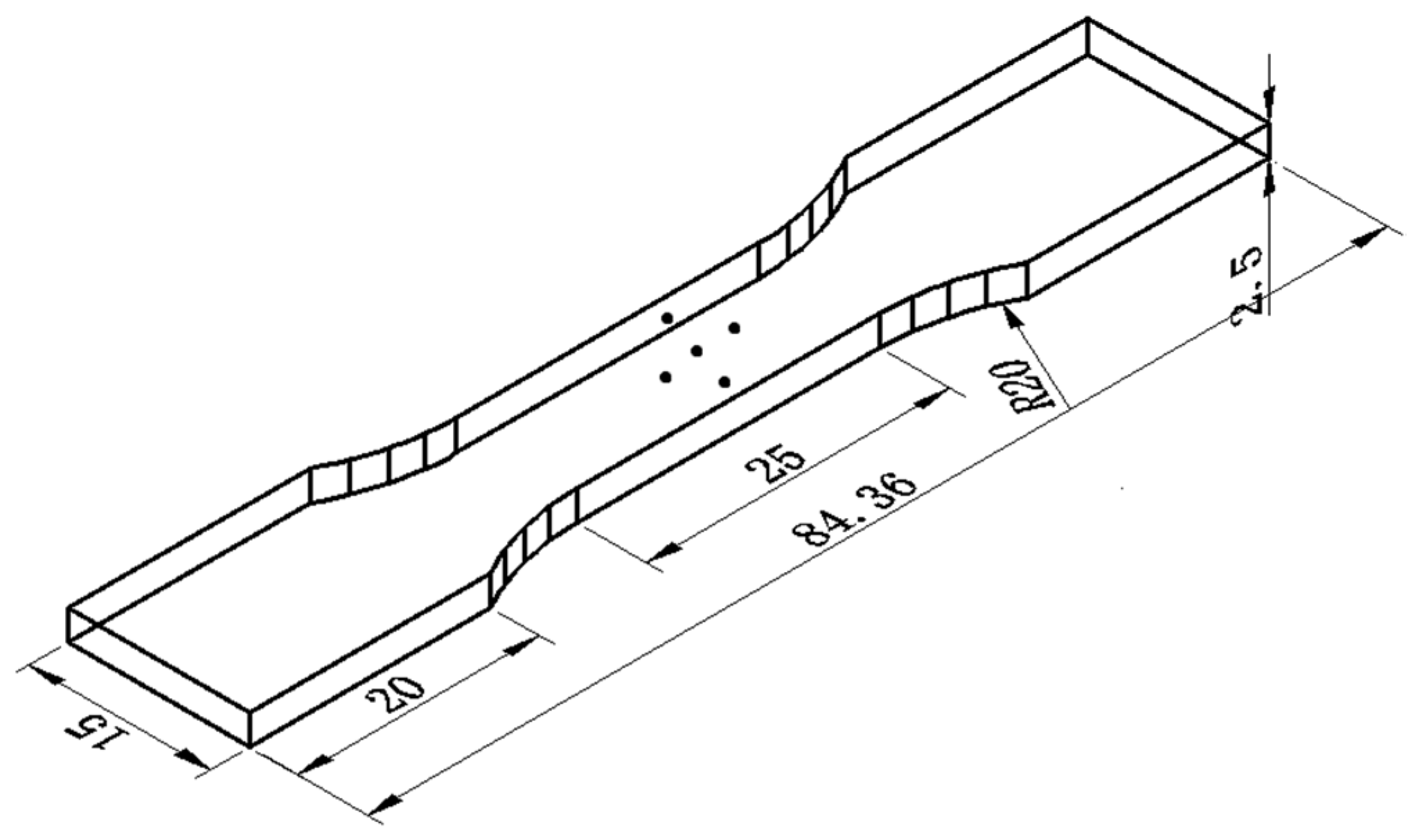
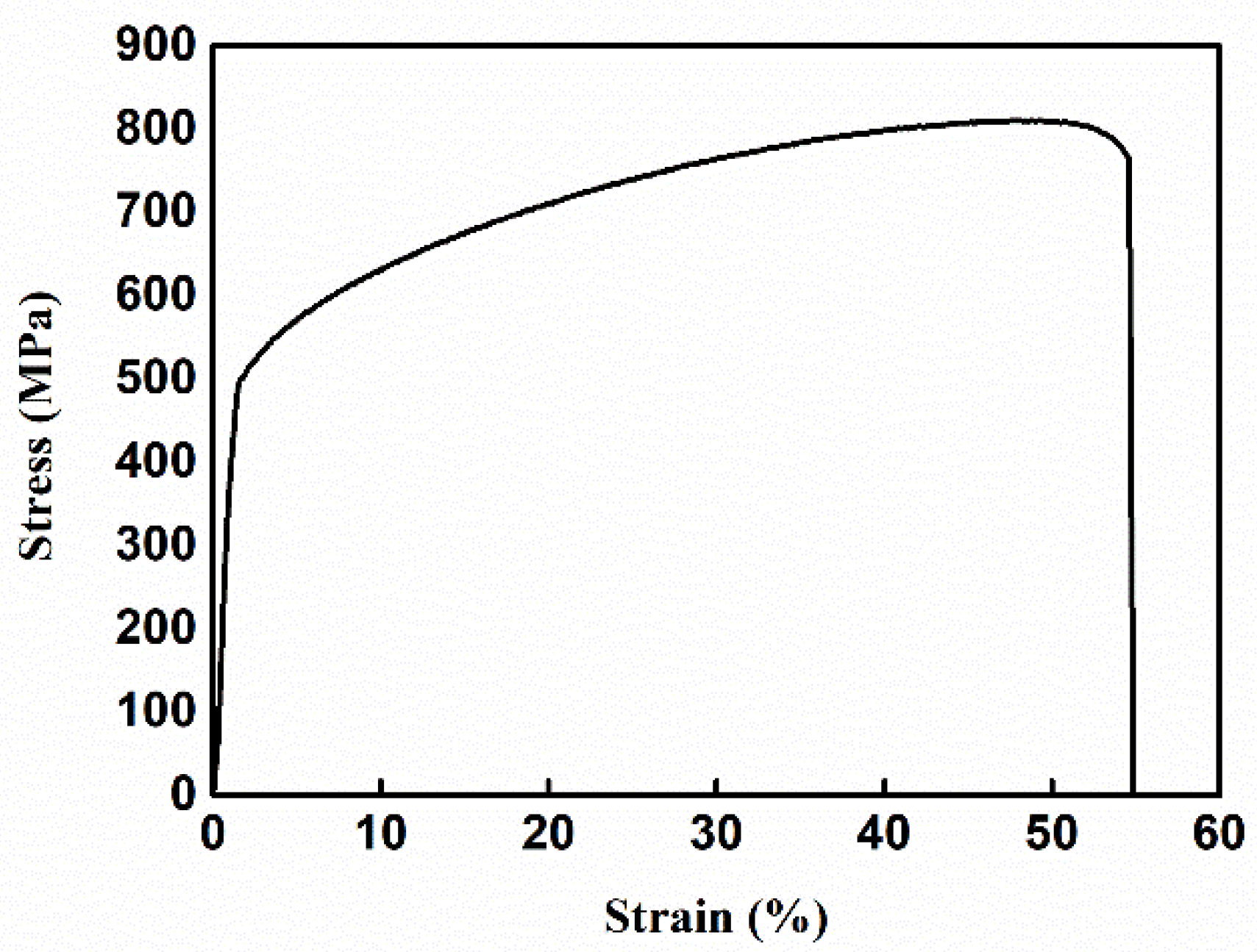
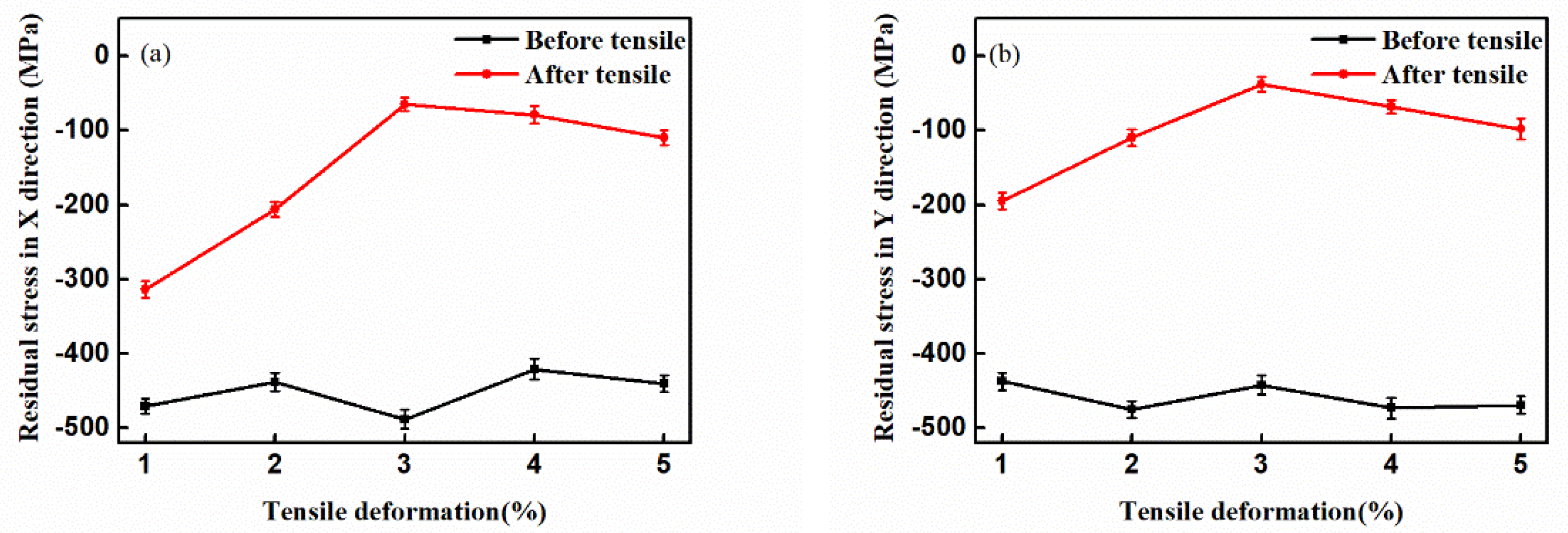
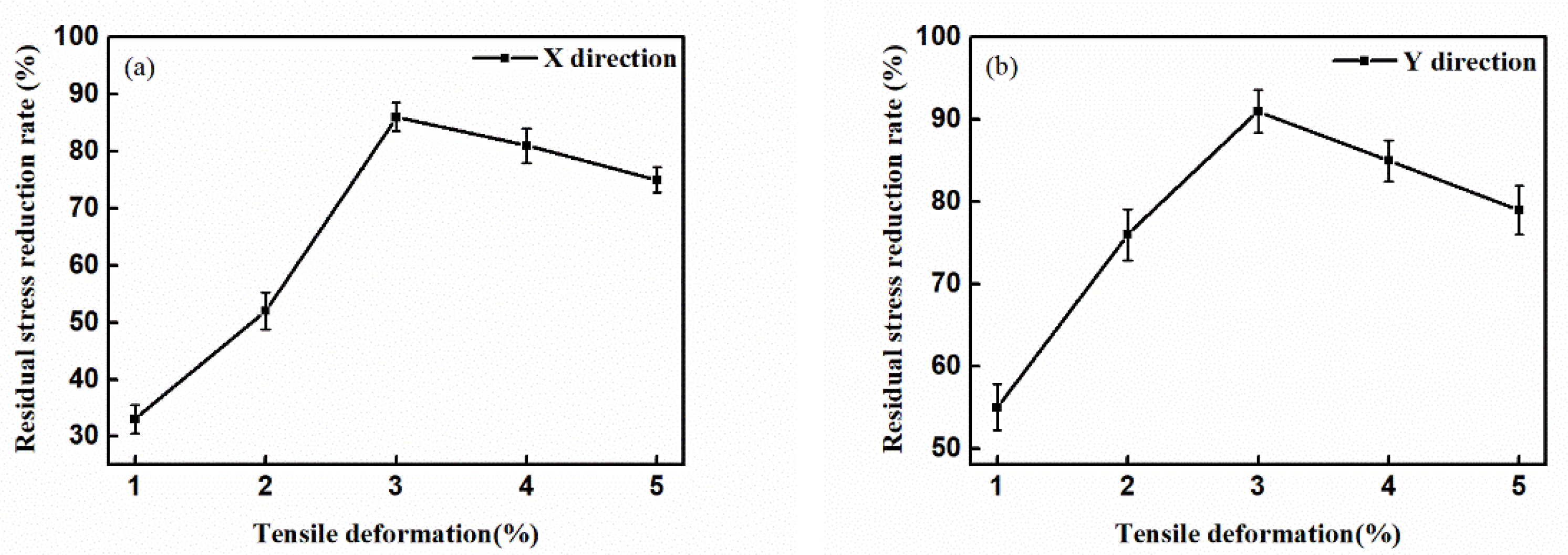
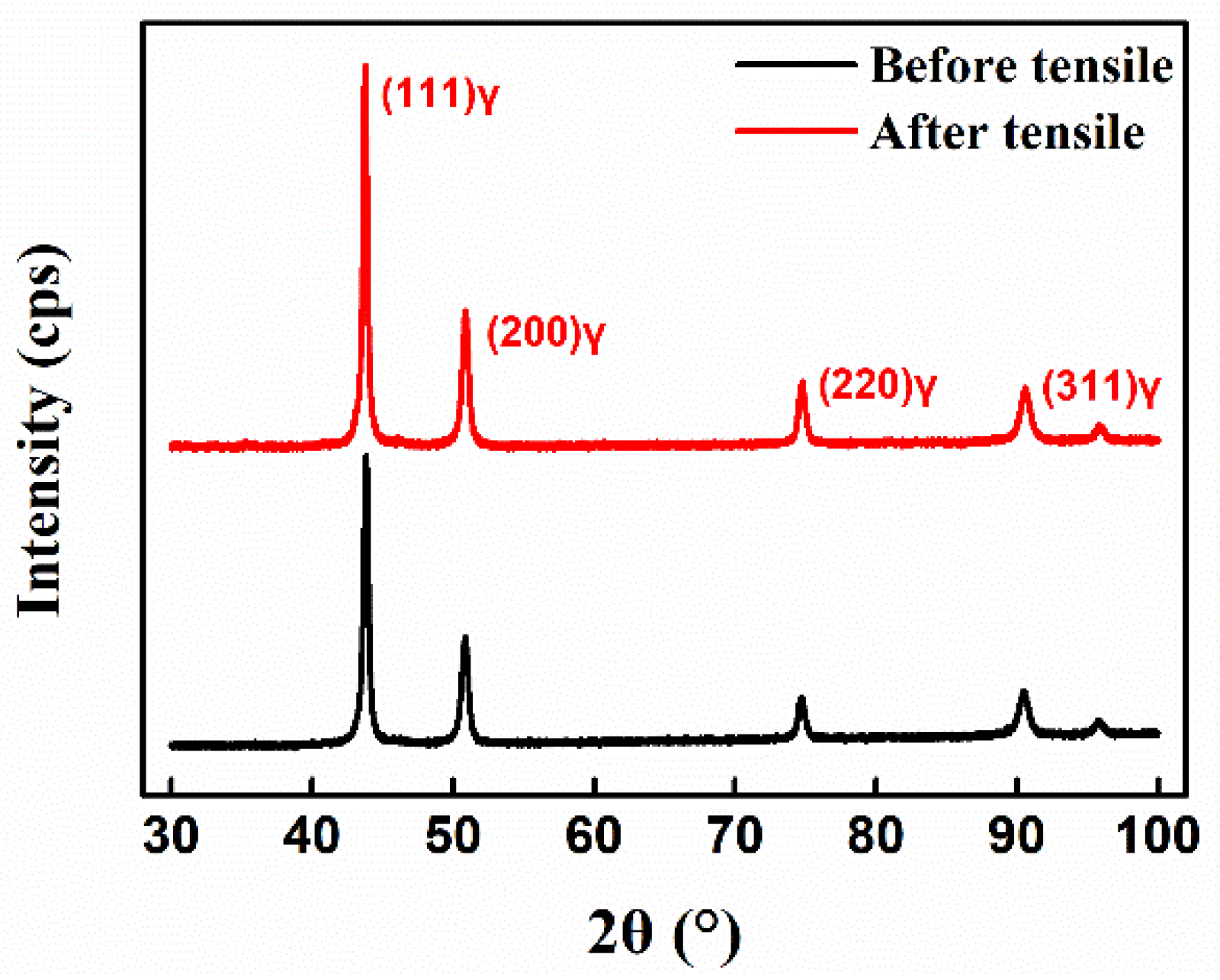
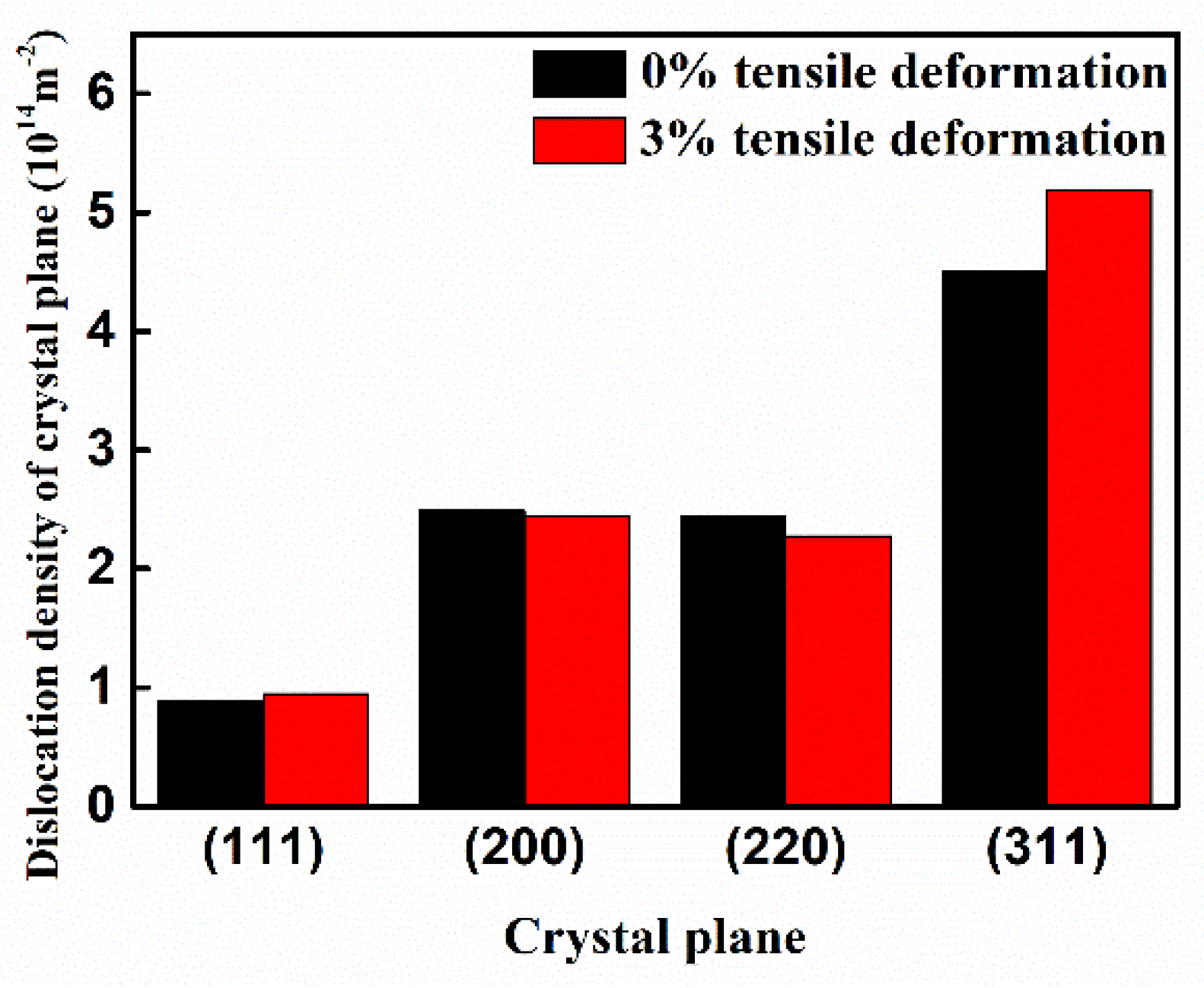
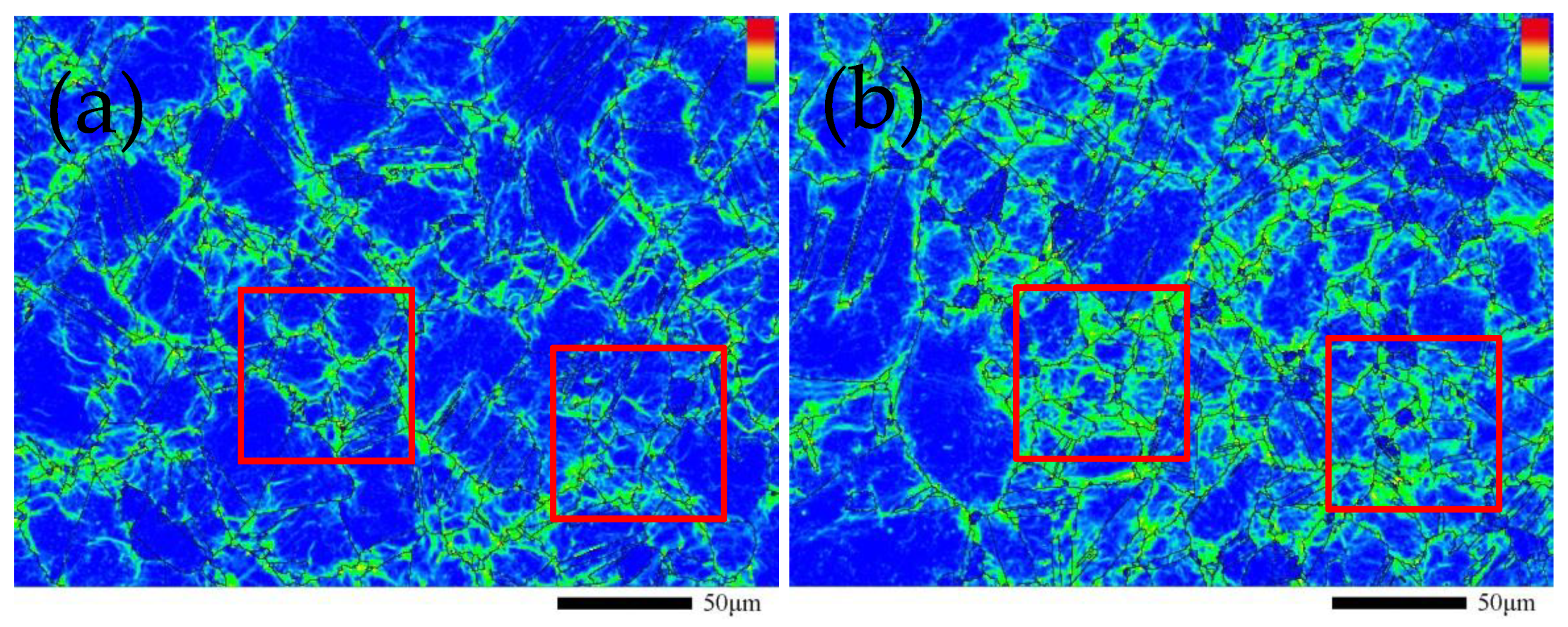


| Ni | Cr | Fe | Nb | Mo | Ti |
| 52.30 | 19.01 | 17.31 | 5.07 | 3.06 | 1.03 |
| Co | Al | Mn | Cu | P | Bal. |
| 0.83 | 0.57 | 0.33 | 0.23 | 0.18 | 0.08 |
| X-ray Tube Anode | K-β Filter | 2-Theta Angle | Wavelength |
| Mn K-α | Cr | 152°–162° | 2.1031 Å |
| HKL | Receipt Time | ψ | Test Direction |
| (311) | 120s | 0°, ±20°, ±40° | X&Y |
Publisher’s Note: MDPI stays neutral with regard to jurisdictional claims in published maps and institutional affiliations. |
© 2021 by the authors. Licensee MDPI, Basel, Switzerland. This article is an open access article distributed under the terms and conditions of the Creative Commons Attribution (CC BY) license (https://creativecommons.org/licenses/by/4.0/).
Share and Cite
Zhu, W.; Zhao, F.; Yin, S.; Liu, Y.; Yang, R. Effect of Tensile Deformation on Residual Stress of GH4169 Alloy. Materials 2021, 14, 1773. https://doi.org/10.3390/ma14071773
Zhu W, Zhao F, Yin S, Liu Y, Yang R. Effect of Tensile Deformation on Residual Stress of GH4169 Alloy. Materials. 2021; 14(7):1773. https://doi.org/10.3390/ma14071773
Chicago/Turabian StyleZhu, Wenxiang, Fei Zhao, Sheng Yin, Yuan Liu, and Ronggui Yang. 2021. "Effect of Tensile Deformation on Residual Stress of GH4169 Alloy" Materials 14, no. 7: 1773. https://doi.org/10.3390/ma14071773
APA StyleZhu, W., Zhao, F., Yin, S., Liu, Y., & Yang, R. (2021). Effect of Tensile Deformation on Residual Stress of GH4169 Alloy. Materials, 14(7), 1773. https://doi.org/10.3390/ma14071773





